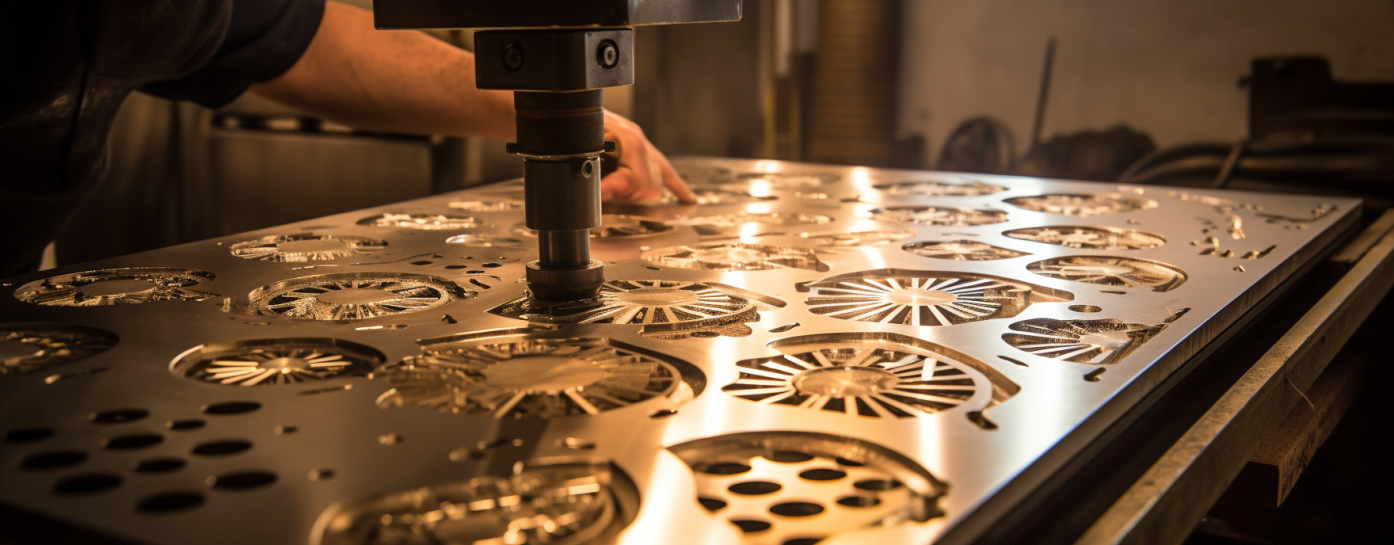In the dynamic landscape of sheet metal fabrication, the art and science of sheet metal stamping stand out as a fundamental and versatile technique. This process, characterized by the forceful application of dies onto metal sheets, has become an integral part of manufacturing, offering efficiency, scalability, and the ability to produce uniform components.

Sheet metal stamping involves the use of specialized dies—forms with cutting and shaping edges—pressed onto a metal sheet to create specific shapes, patterns, or holes. The force exerted by the press deforms the metal, resulting in the desired form. This process can be categorized into several types, including blanking, piercing, bending, and coining, each serving a unique purpose in the overall stamping process.
Die:
The die is a crucial component in the sheet metal stamping process. It dictates the final shape and design of the stamped component.
Dies can be single-stage or progressive, with progressive dies allowing for multiple operations in a single pass.
Press:
The press is the machinery responsible for applying force to the die, shaping the metal sheet accordingly.
Presses can vary in size and complexity, ranging from simple mechanical presses to high-speed hydraulic presses.
High Precision:
Sheet metal stamping offers a high degree of precision, allowing for the creation of intricate and complex designs with tight tolerances.
This precision is particularly valuable in industries such as automotive manufacturing and electronics.
Efficiency in Mass Production:
Stamping excels in mass production scenarios, providing a rapid and repeatable process for creating numerous identical components.
The efficiency of stamping contributes to lower per-unit costs, making it an economically attractive option for large-scale production.
Versatility in Materials:
Sheet metal stamping can be applied to a wide range of materials, including steel, aluminum, copper, and alloys.
This versatility allows manufacturers to choose materials that meet specific requirements for strength, weight, and corrosion resistance.
Complex Geometries:
The process accommodates the production of components with complex geometries, enabling the creation of parts with multiple features in a single operation.
Consistent Quality:
With proper tooling and setup, sheet metal stamping ensures consistent quality across large production runs.
This reliability is crucial in industries where product uniformity is a critical factor.
Sheet metal stamping finds applications in a myriad of industries:
Automotive: Creating components like body panels, brackets, and engine parts.
Electronics: Fabricating intricate parts for electronic devices.
Appliances: Forming panels and components for household appliances.
Aerospace: Producing precision parts for aircraft and spacecraft.
While sheet metal stamping is a highly efficient process, it comes with certain challenges:
Tooling Costs: The creation and maintenance of dies can represent a significant upfront cost.
Design Limitations: Complex geometries may require multiple stamping operations, influencing the overall design and production time.
As technology continues to advance, innovations in materials, tooling, and press technologies will likely enhance the capabilities of sheet metal stamping. Integration with digital design and simulation tools will further streamline the process, ensuring that sheet metal stamping remains at the forefront of precision manufacturing.